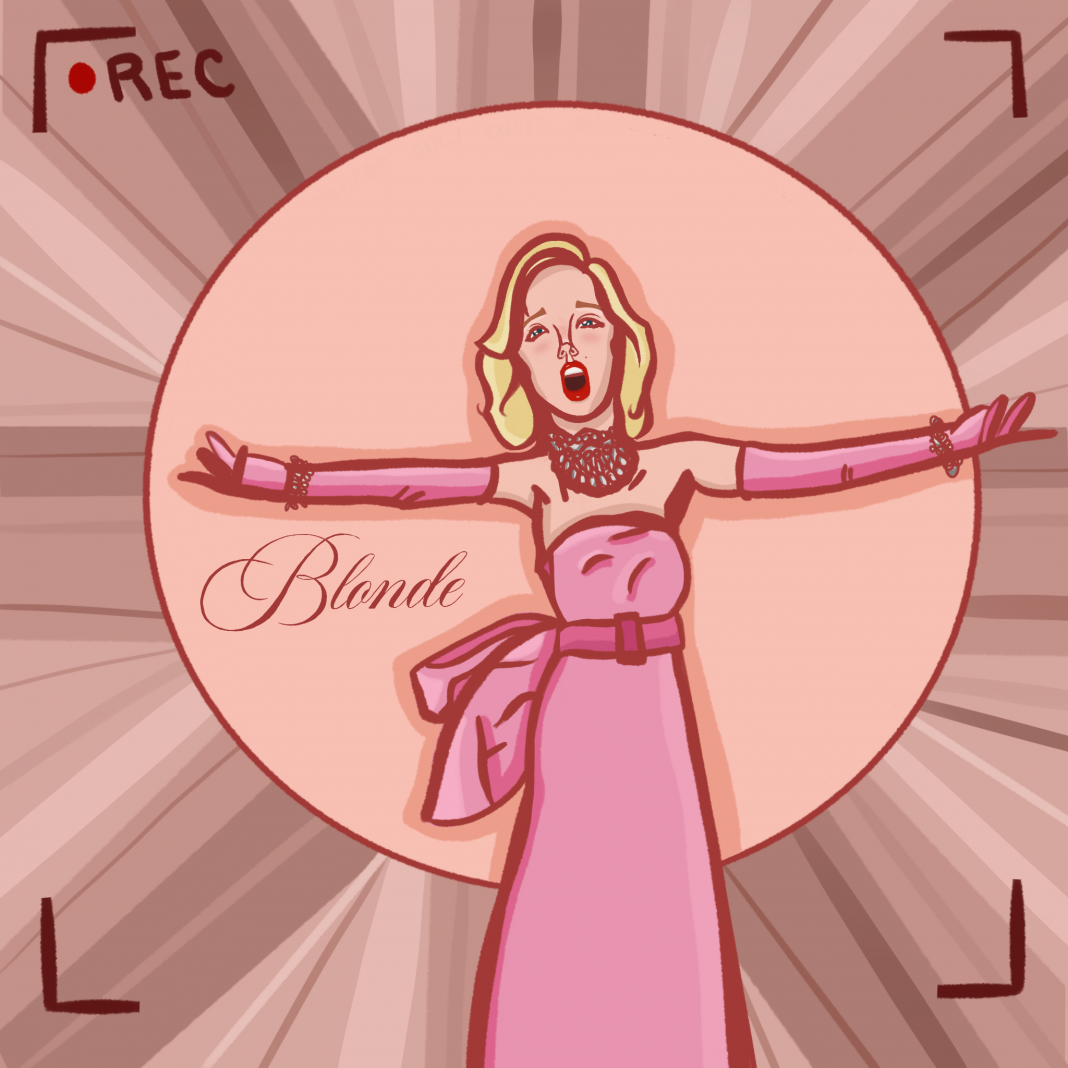“Watched by all. Seen by none,” reads the tagline on a poster featuring an extreme close-up of Marilyn Monroe’s face (portrayed by Ana De Armas) and her iconic beauty mark. Unfortunately, these remarks go unremedied in Netflix’s vulgar new biographical film “Blonde.”
Based on the biographical fiction novel of the same name by Joyce Carol Oates, “Blonde” opens with a young Monroe — whose real name is Norma Jeane — fleeing a wildfire with her mentally unstable, delusional and single mother, Gladys (Julianne Nicholson). Monroe is quickly thrown into adulthood, starring in racy advertisements and breaking into the film industry in tragic ways.
“A real and patently miserable woman lived inside that marvelous concoction of flesh and light and Oates intends ‘Blonde’ to describe that woman’s experience… it can, better than any film, give us her interior world,” New York Times critic Laura Miller said in a 2000 review of the novel.
22 years later, Oates’ remarks remain true.
Unlike the novel, the movie revels in a fantasy of pseudohistory, brutalization and misogyny. “Blonde” does little to provide deeper insight into the mind of the late actress. Monroe is painted only as a victim of the men in power around her without nuance, depth or agency to help herself. It is an insult to Monroe that this rendition of her is dehumanized and stripped of any power.
“Blonde” at least knows what it is about — the struggle between Jeane’s real self, her Monroe persona and the endless cycle of exploitation. Regretfully, her suffering is dramatized in ways that glorify her exploitation without diving into the very real complexities that go along with it. The film has an idea of what it wants to say, but is unfocused in its approach to these nuances.
What is perhaps the movie’s most offensive crime is that it continues this cycle of exploitation of Monroe’s body and image in harmful and sexist ways, just as Hollywood did to her. There is no reason for De Armas to be bare in almost half of her scenes other than to entertain the disgusting men who made this (nudity is not a necessity for the viewer when a character is reading a book in her bed). Nudity can be used as a form of empowerment if done right, but when a character is only portrayed as the victim, it is brutally exploitative.
If you can look past these faults, you may find a technical wonder in “Blonde.” Director and writer Andrew Dominik’s technicalities throughout the movie are impeccable and his direction makes Monroe’s story feel like a drug-induced hellscape. But three hours of this dreary story can make you want to look away.
Besides De Armas’ spectacular performance, there’s not another shed of merit to “Blonde.” Monroe did suffer unjustly at the hands of the Hollywood machine, but to revel in her trauma so much to be blind to the rest of Monroe — the rest of Jeane — is simply wrong.
“Watched by all. Seen by none.” If the idea of watching “Blonde” ever crosses your mind, I highly recommend the latter.
Rating: 1.5/5
“Blonde” is now streaming on Netflix and in select theaters nationwide. Rated NC-17 for sex, nudity and substance abuse. Contains graphic depictions of sexual violence and self-harm. Runtime: 2 hours 46 minutes.






